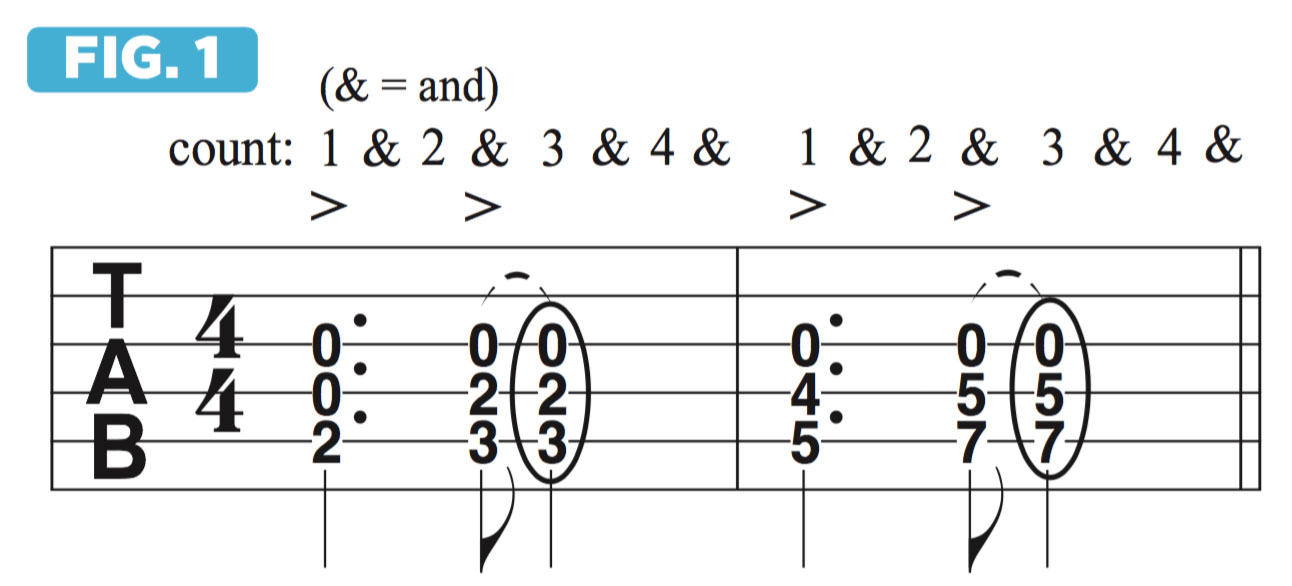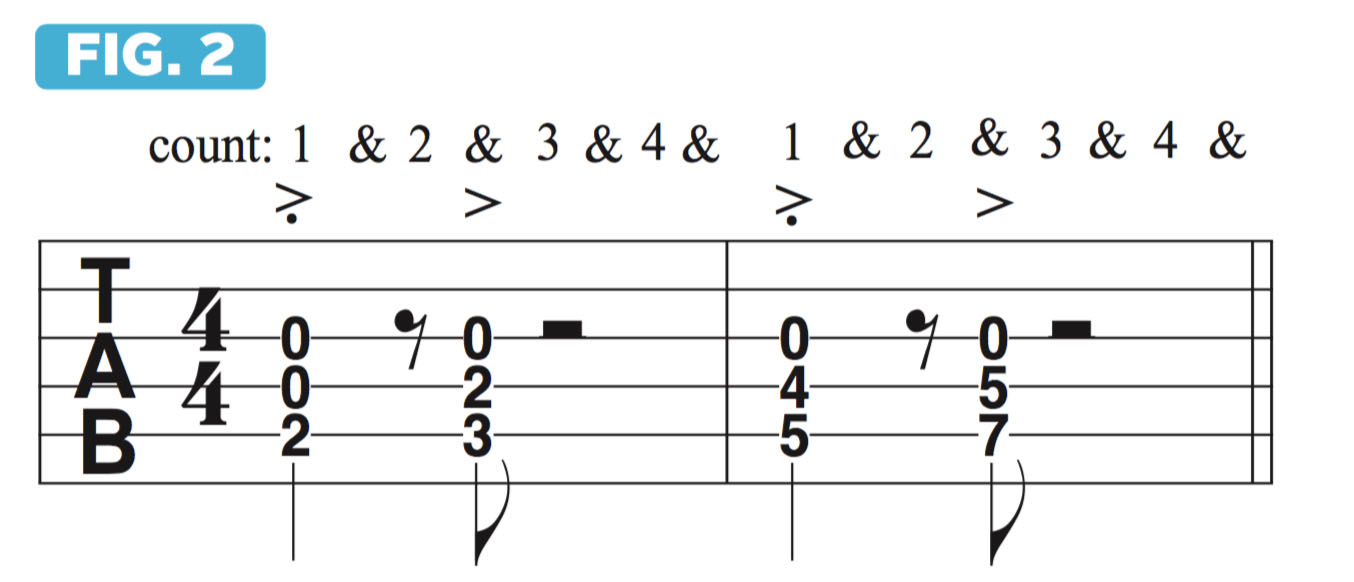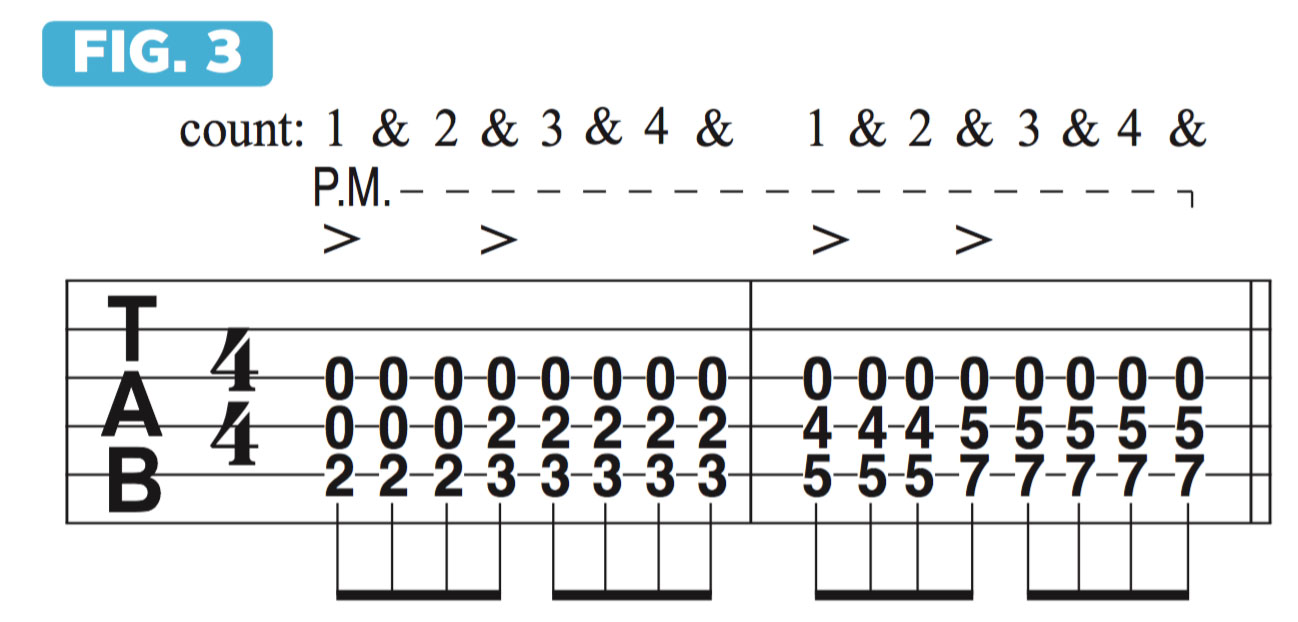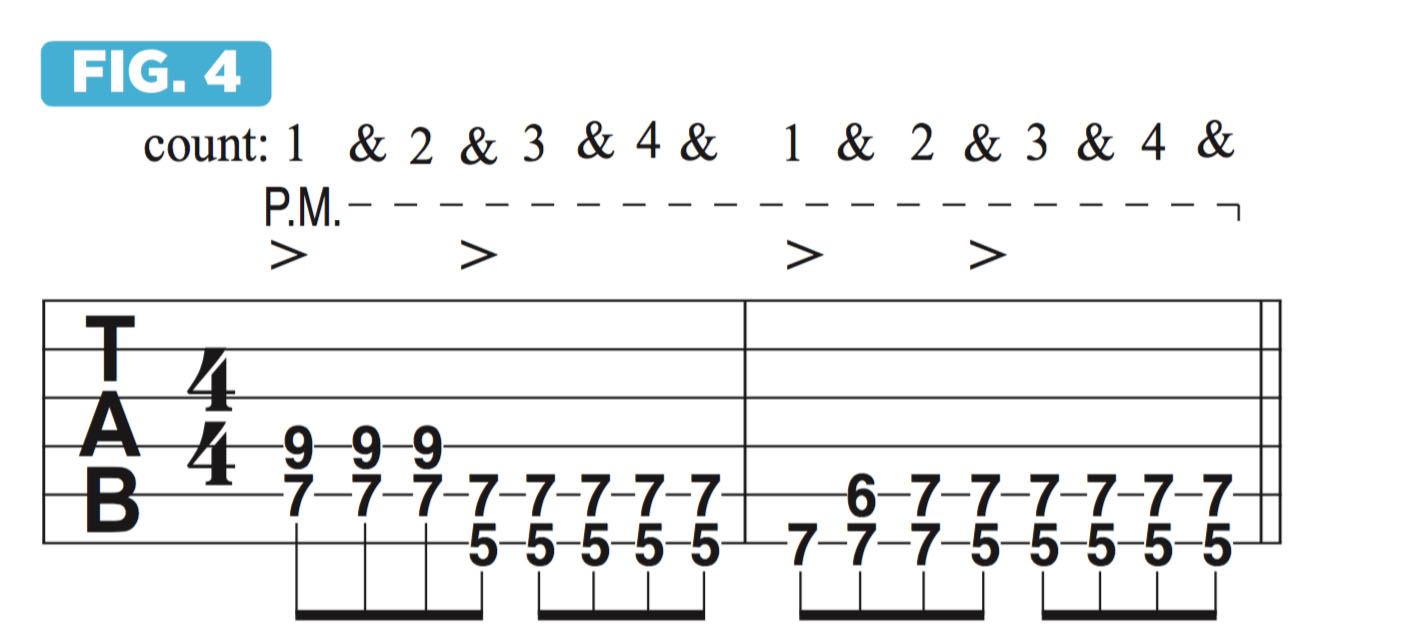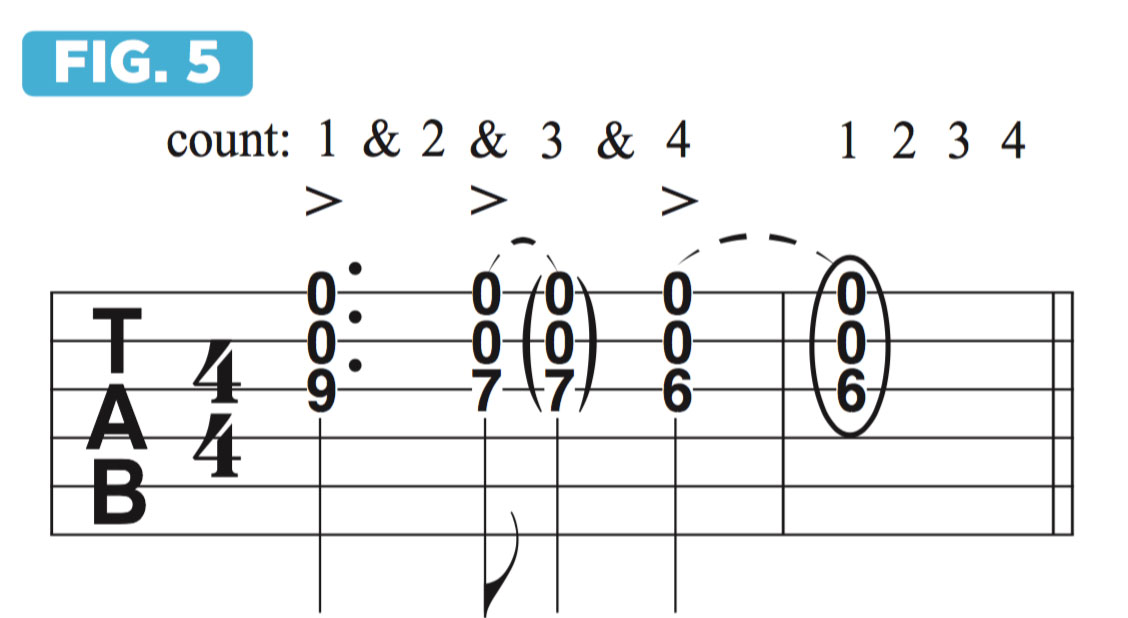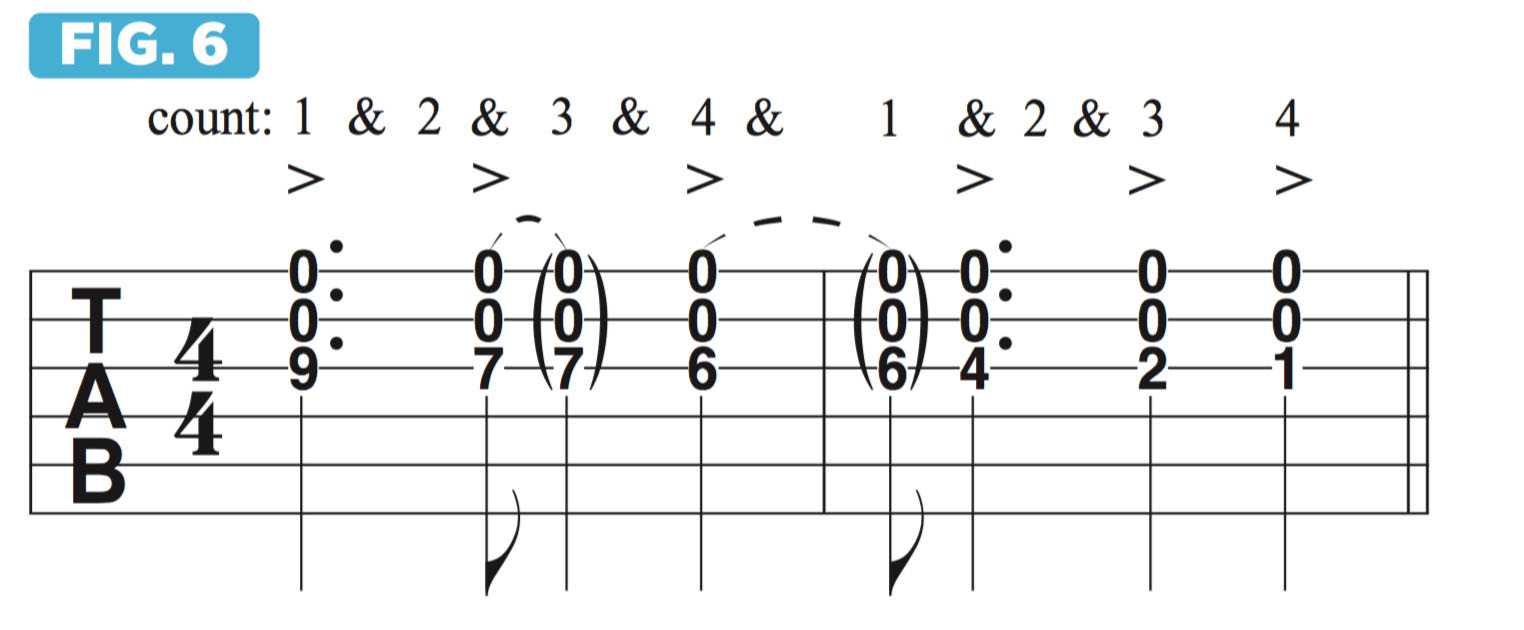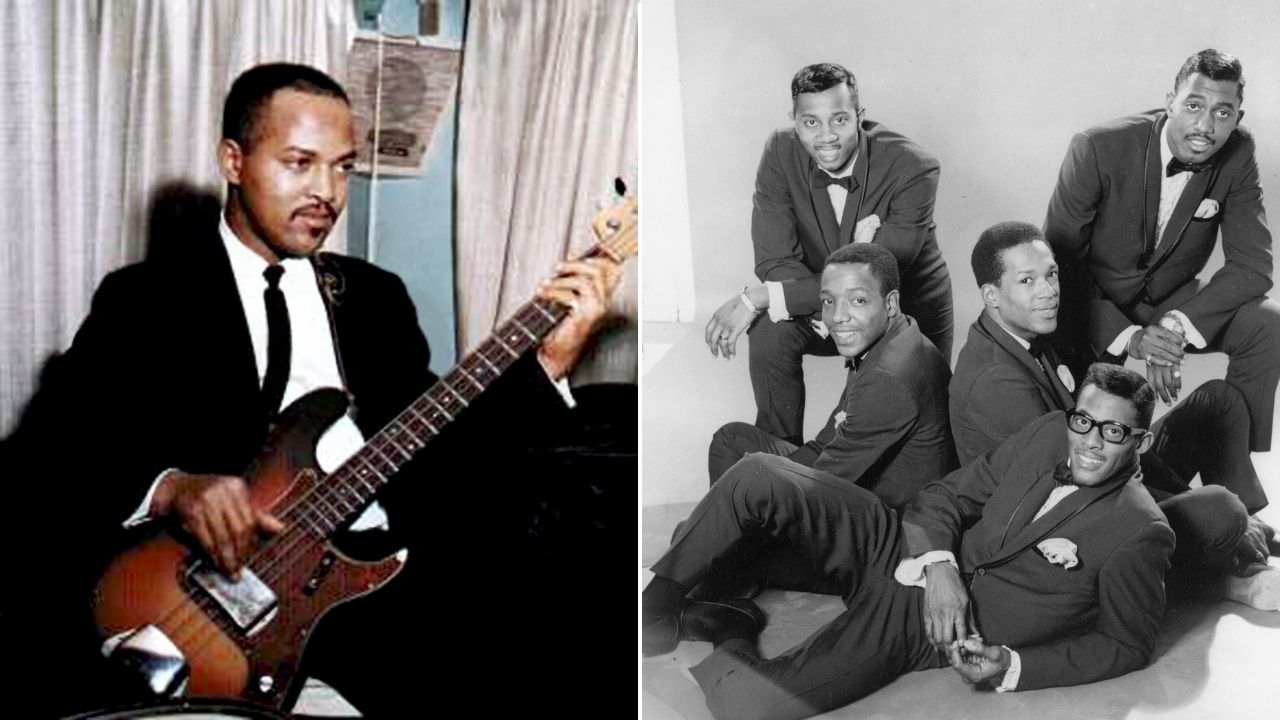How to build dramatic tension with dotted-quarter syncopations
Mastering rhythms within rhythms can make for much more interesting compositions
Last time, we saw how an augmentation dot placed after a note or rest increases its value, or duration, by 50%. We also learned that its opposite, the diminution dot, also known as the staccato dot, placed directly above or below a note head or tab number, decreases its duration, or sustain, by 50%.
Both kinds of dots can be used in some cases to render a simpler, less cluttered visual representation of a rhythm, by eliminating a tie or a rest, which makes something written in sheet music or rhythmic tab easier to read.
I’d now like to focus on the sound of the dotted-quarter rhythm, which spans one and one half beats, and look at different ways in which it can be conveyed and repeated with anticipated chord changes to create syncopation and dramatic musical tension, via a chain of shifting accents.
In I Got Rhythm, Part 4, I cited the chorus to Photograph by Def Leppard, which is built with ringing eighth-note arpeggios, as a good example of a rock song that has a chord change that arrives an eighth note “early” in each bar, meaning it’s anticipated by half a beat, falling on the “and of 2” (“1 and 2 and”) instead of squarely on beat 3.
The linking together of dotted-quarter accents builds tension, and the effect can be prolonged and intensified by adding another one
Interestingly, this same kind of “push” effect can be achieved in a rhythmically stripped-down manner, with just a dotted quarter note followed by an eighth note tied to a half note, as illustrated in Figure 1.
Another option would be to use rests and staccato articulations to inject “holes of silence” between the accented chord changes, as shown in Figure 2.
A third, alternative way to achieve this same kind of harmonic rhythm is to strum chords in a continuous, unbroken stream of palm-muted eighth notes and change chords on “2 and,” as in Figure 3.
All the latest guitar news, interviews, lessons, reviews, deals and more, direct to your inbox!
What’s really cool about this approach is that it conveys the dotted-quarter rhythm on top of a steady eighth-note pulse, resulting in a rhythm within a rhythm (two for the price of one!), due to the inherent syncopation created by the anticipated chord changes. The result is a driving and very appealing sound.
A good example of this can be found in the intro to Stacy’s Mom by Fountains of Wayne, which informs Figure 4. Again, notice how a chord change falls on “2 and” in each bar. As with the previous example, I’ve notated dynamic accents above certain tab numbers here, to clearly illustrate the syncopation.
But due to the inherent emphasis on the changing chords, the effect still comes across even if you disregard the accents and just strum each chord at the same volume.
A great way to build upon the interesting sound of a dotted-quarter syncopation is to repeat it, with the next chord change falling on beat 4 and now being anticipated by a full beat.
A good example of this can be found in Good Times Roll by the Cars, where at the end of each chorus guitarist Ric Okasek strums a three-chord sequence similar to that shown in Figure 5.
Notice that the time span between each chord change is one and one half beats, which is equal to a dotted quarter note and may be thought of as such.
But to abide by the customary notational practice of showing the middle of the measure in 44 meter, with a break between beats 2 and 3, I’ve written an eighth note tied to a quarter note here, which I think is helpful to the reader.
This linking together of dotted-quarter accents builds tension, and the effect can be prolonged and intensified by adding another one, which would then fall on the “and of 1” in the next bar. Last time, I cited the chorus to I’ve Done Everything for You by Rick Springfield as an example of this move.
Referring back to “Good Times Roll,” Figure 6 illustrates a chain of dotted-quarter rhythms that bring to mind that song’s ending, and Figure 7 shows how to achieve the same kind of syncopation using the "rhythm-within-a-rhythm" approach with continuous eighth notes, along the lines of what Ocasek played.
Over the past 30 years, Jimmy Brown has built a reputation as one of the world's finest music educators, through his work as a transcriber and Senior Music Editor for Guitar World magazine and Lessons Editor for its sister publication, Guitar Player. In addition to these roles, Jimmy is also a busy working musician, performing regularly in the greater New York City area. Jimmy earned a Bachelor of Music degree in Jazz Studies and Performance and Music Management from William Paterson University in 1989. He is also an experienced private guitar teacher and an accomplished writer.
